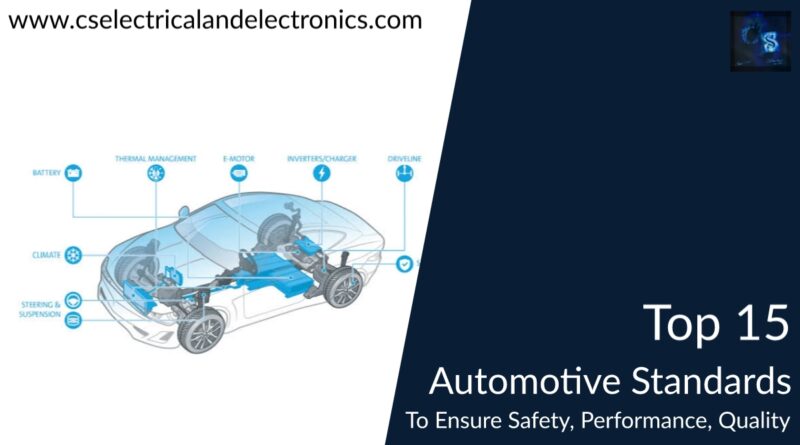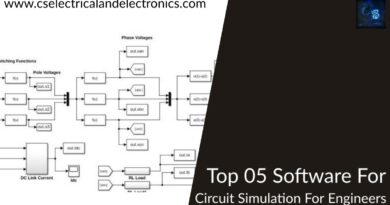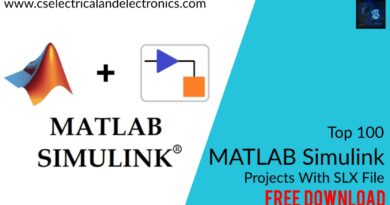Top 15 Automotive Standards To Ensure Safety, Performance
Hello guys, welcome back to our blog. Here in this article, we will discuss the top 15 automotive standards to ensure the safety, performance, and quality of vehicles, and we will also discuss which standards will be used for a particular application.
If you have any electrical, electronics, and computer science doubts, then ask questions. You can also catch me us Instagram – CS Electrical & Electronics.
Also, read the following:
- Electric Vehicles Vs Hydrogen Vehicles? Which Is Best To Buy?
- Top 15 Technologies in CyberSecurity, Cybersecurity Technology
- What Is VCU (Vehicle Control Unit), Purpose, Working, Drawbacks
Top 15 Automotive Standards
Automobile standards are technical requirements, specifications, and recommendations that are adhered to by suppliers, manufacturers, and other organizations in the automotive sector. These standards support interoperability and compatibility across various parts, systems, and components while also ensuring the safety, performance, and quality of automobiles. Vehicle design, construction, materials, testing, performance, safety, environmental effect, emissions, fuel efficiency, and a wide range of other concerns can all be covered by automotive standards. Here are 15 examples of automotive standards:
- ISO 26262 – Road vehicles – Functional safety
- ISO/TS 16949 – Quality management systems – Particular requirements for the application of ISO 9001:2008 for automotive production and relevant service part organizations
- SAE J3061 – Cybersecurity Guidebook for Cyber-Physical Vehicle Systems
- SAE J1939 – Onboard Diagnostics (OBD) for Heavy-Duty Vehicles
- SAE J1455 – Interior Environmental Requirements for Ground Vehicles
- SAE J1321 – Fuel Economy Test Procedure for Light-Duty Vehicles
- SAE J1273 – Recommended Practice for Hydraulic Hose Assemblies
- SAE J1113 – Requirements for Electronic Systems in Passenger Cars
- SAE J826 – Standard for Wheel Hub Face Runout
- SAE J822 – Standard for Road Wheel Hub Face and Wheel Mounting Surface Runout
- SAE J639 – Standard for Engine Coolant Performance
- SAE J578 – Standard for Automotive Lamps
- SAE J545 – Standard for Plastic Injection Molding Machines for Automotive Industry
- SAE J537 – Standard for Automotive Electrical and Electronic Systems Terminology
- SAE J511 – Standard for Manual Transmission Shift Lever Sequence, Starting Gates, and Shift Pattern
01. ISO 26262 – Road vehicles – Functional safety
The automotive industry has adopted ISO 26262 as an international standard for functional safety. It outlines the specifications for the creation of safety-related systems in light commercial vehicles and passenger cars with a maximum gross vehicle mass of 3,500 kg or less. The standard applies to all electrical and/or electronic systems and software in cars and covers the entire development process, from concept to manufacture and operation.
It also offers advice on how to deal with risks and hazards that might develop during the design and operation of a safety-related system, as well as how to design and put in place controls to lessen these risks and hazards. The goal of ISO 26262 is to assist manufacturers in ensuring the safety of automobiles and the people inside of them, as well as the safety of other drivers and pedestrians.
02. ISO/TS 16949 – Quality management systems
An automobile industry-specific quality management system must meet the requirements of ISO/TS 16949, a technical specification. It was created to standardize the many automotive quality standards used by manufacturers throughout the world by the International Organization for Standardization (ISO) and International Automotive Task Force (IATF).
Continuous improvement, defect prevention, and the elimination of variation and waste in the automotive supply chain are the primary focuses of ISO/TS 16949. It is based on the ISO 9001 standard for quality management systems and adds standards specifically for the automotive sector, like the capacity to deliver safe and dependable products that adhere to the customer and regulatory requirements.
The ISO/TS 16949 standard is intended for use by both automotive manufacturers and suppliers of goods and services associated with the industry. It is designed to assist businesses in enhancing their quality management procedures and better serving the needs of their clients. Although certification to ISO/TS 16949 is optional, many businesses in the automotive sector prefer to do so to show their dedication to quality and to obtain a competitive edge in the market.
03. SAE J3061 – Cybersecurity Guidebook for Cyber-Physical Vehicle Systems
The Society of Automotive Engineers (SAE) has created a guidebook called SAE J3061 that offers suggestions and best practices for handling cybersecurity in cyber-physical vehicle systems (CPVS). Systems with physical components (such as sensors, actuators, and mechanical parts) as well as computation and networking capabilities are known as “cyber-physical vehicle systems.” Advanced driver assistance systems (ADAS), connected and autonomous vehicles, and vehicle-to-everything (V2X) connectivity are just a few of the automotive-related applications that utilize them.
The goal of SAE J3061 is to assist companies that design, develop, and manage CPVS in comprehending the cybersecurity risks related to those systems and putting in place the necessary measures to reduce those risks. Risk assessment, security requirements engineering, secure development techniques, and incident response are just a few of the many subjects covered by the manual in relation to cybersecurity in CPVS. It is intended for usage by a range of parties, including automakers, suppliers of parts, and government agencies.
04. SAE J1939 – Onboard Diagnostics (OBD) for Heavy-Duty Vehicles
The Society of Automotive Engineers (SAE) created the SAE J1939 standards for onboard diagnostics (OBD) in heavy-duty vehicles. It outlines the communication protocols and diagnostic messages used by these automobiles’ OBD systems.
OBD is primarily used to track the functionality and condition of a car’s engine, transmission, and other systems. OBD systems collect information about a vehicle’s performance using sensors and other monitoring tools. This information is then utilized to diagnose issues and pinpoint areas in need of improvement. OBD systems can be used to increase fuel efficiency, diagnose issues, and cut maintenance costs in addition to helping vehicles comply with pollution rules.
Numerous heavy-duty vehicles, such as trucks, buses, and off-road vehicles, use SAE J1939. It is widely accepted as the industry standard for OBD in heavy-duty vehicles and was created to be compatible with a variety of vehicle designs and communication networks.
05. SAE J1455 – Interior Environmental Requirements for Ground Vehicles
The SAE J1455 standard, which describes the interior environmental standards for ground vehicles, was created by the Society of Automotive Engineers (SAE). It covers a broad variety of elements, including temperature, humidity, air quality, and noise, that may have an impact on the safety and comfort of vehicle occupants.
The major goal of SAE J1455 is to offer recommendations for the design and testing of car interiors to make sure they adhere to a set of minimum safety and comfort requirements. The standard is meant to be used by regulators, component suppliers, and vehicle manufacturers.
The standards for several elements of the vehicle’s interior environment, including temperature, humidity, air quality, and noise, are outlined in SAE J1455. Along with providing instructions on how to build and test systems and components to meet the requirements, it also explains how to monitor and assess these characteristics. The standard is frequently revised to take into account the most recent advancements and research in the field of car interior settings.
06. SAE J1321 – Fuel Economy Test Procedure for Light-Duty Vehicles
The Society of Automotive Engineers (SAE) created the SAE J1321 standard, which details a test technique for calculating the fuel efficiency of light-duty cars. The goal of the standard is to offer an accurate and consistent way to gauge a vehicle’s fuel efficiency under various driving circumstances.
The SAE J1321 test technique covers a range of distinct driving cycles that reflect various forms of driving and is intended to closely imitate real-world driving circumstances. These include driving in cities, on highways, and a combination of cities and highways. The test process also accounts for variables that may have an impact on fuel efficiencies, such as tire size, vehicle weight, and ambient temperature.
A widely accepted industry standard for gauging the fuel efficiency of light-duty cars is SAE J1321. Vehicle producers, authorities, and other organizations use it to assess the fuel effectiveness of cars and to contrast the fuel economy of various models. To reflect the most recent findings and advancements in the field of vehicle fuel economy, the standard is frequently updated.
07. SAE J1273 – Recommended Practice for Hydraulic Hose Assemblies
The Society of Automotive Engineers (SAE) produced SAE J1273, a recommended practice that offers instructions for the choice, routing, fabrication, installation, upkeep, and replacement of hydraulic hose assemblies. A flexible tube called a hydraulic hose assembly transports pressurized hydraulic fluid between hydraulic system parts.
The hydraulic hose assemblies are covered in great detail in SAE J1273, including the choice of material, hose structure, hose routing, and installation procedures. It also offers suggestions for maintenance and replacement as well as rules for the identification, testing, and inspection of hydraulic hose assemblies.
In order to ensure the safe and dependable operation of hydraulic hose assemblies, SAE J1273 primarily aims to provide a set of best practices for their use. A wide range of stakeholders, including vehicle manufacturers, component suppliers, and maintenance organizations, are expected to utilize the standard. Hydraulic hose assemblies, it is widely acknowledged as the industry standard in the automobile, aircraft, and other sectors.
08. SAE J1113 – Requirements for Electronic Systems in Passenger Cars
The Society of Automotive Engineers (SAE) produced the SAE J1113 standard, which outlines the specifications for electronic systems in passenger cars. The standard includes standards for performance, reliability, safety, and electromagnetic compatibility. It also covers a wide range of topics relating to the design, development, and testing of electronic systems in passenger cars (EMC).
The fundamental goal of SAE J1113 is to establish a set of minimum standards for passenger automobile electronic systems that must be met in order to guarantee their safe and dependable operation. The standard, which is commonly regarded as the industry standard for electronic systems in passenger automobiles, is meant to be used by vehicle manufacturers, component suppliers, and regulatory authorities.
To reflect the most recent advancements and research in the field of vehicle electronics, SAE J1113 is frequently updated. It is one of a number of standards created by the SAE for automotive electronic systems, and it is frequently used with other standards in the same field, such as SAE J1939 (OBD for heavy-duty cars) and SAE J2464 (networking and communication in vehicles).
09. SAE J826 – Standard for Wheel Hub Face Runout
The Society of Automotive Engineers (SAE) produced the SAE J826 standard, which details the measuring process and tolerance limitations for wheel hub face runouts on ground vehicles. Wheel hub face runout is a measurement of how much the wheel hub wobbles or is out of line, and it can be brought on by things like manufacturing flaws, wear, and damage.
The major goals of SAE J826 are to provide tolerance limits that guarantee the safe and proper operation of the wheel and tire assembly, as well as to provide a consistent and reliable method for evaluating wheel hub face runout. The standard, which is commonly regarded as the industry standard for wheel hub face runout, is intended for use by vehicle manufacturers, component suppliers, and maintenance organizations.
The wheel hub face runout measuring method and tolerance limits for various vehicle types and applications are described in SAE J826, respectively. It also offers instructions on how to fix excessive runout if it is found. The standard is frequently updated to take into account the most recent advancements and research in the area of wheel hub face runout.
10. SAE J822 – Standard for Road Wheel Hub Face and Wheel Mounting Surface Runout
The Society of Automotive Engineers (SAE) produced the SAE J822 standard, which details the measuring process and tolerance limitations for ground vehicle road wheel hub face runout and wheel mounting surface runout. Road wheel hub face runout and wheel mounting surface runout are measurements of the amount of wobbling or misalignment in the wheel hub and the surface of the wheel that mounts to the hub, respectively. These two things may be brought on by things like manufacturing flaws, wear, and damage.
The major goals of SAE J822 are to define tolerance limits that guarantee the safe and proper operation of the wheel and tire assembly as well as to offer a consistent and reliable method for evaluating road wheel hub face runout and wheel mounting surface runout. The standard, which is commonly regarded as an industry standard for road wheel hub face and wheel mounting surface runout, is meant to be utilized by vehicle manufacturers, component suppliers, and maintenance organizations.
The tolerance limits for various kinds of vehicles and applications are specified in SAE J822, as well as the measuring process for road wheel hub face runout and wheel mounting surface runout. It also offers instructions on how to fix excessive runout if it is found. In order to reflect the most recent findings and advancements in the field of road wheel hub face and wheel mounting surface runout, the standard is frequently revised.
11. SAE J639 – Standard for Engine Coolant Performance
The Society of Automotive Engineers (SAE) produced the SAE J639 standard, which details the performance specifications for engine coolants used in ground vehicles. In order to prevent overheating and move heat away from the engine, coolants are utilized. They also offer defense against freezing, boiling, and rusting.
The major goal of SAE J639 is to provide a set of minimum performance standards for engine coolants in order to guarantee their efficacy and dependability. The standard is widely regarded as an industry standard for engine coolants in the automotive sector and is designed for use by vehicle manufacturers, component suppliers, and regulatory agencies.
According to SAE J639, engine coolant performance must meet standards for boiling temperature, freezing point, corrosion resistance, and compatibility with other engine components. It also offers instructions on how to test and assess engine coolants to make sure they fulfill performance standards. The standard is frequently updated to take into account the most recent advancements and research in the field of engine coolants.
12. SAE J578 – Standard for Automotive Lamps
The Society of Automotive Engineers (SAE) produced the SAE J578 standard, which outlines the specifications for automotive lighting used on ground vehicles. Automotive lamps are light sources that are mounted on cars and used for a variety of functions, such as illumination, signaling, and warning.
SAE J578’s primary objective is to provide a set of minimum standards that automobile lamps must adhere to in order to assure their reliability and safety. It is widely accepted as the industry standard for automotive lighting and is intended for use by component suppliers, regulatory agencies, and vehicle manufacturers.
The specifications for various vehicle lighting, such as headlamps, taillamps, stop lamps, turn signal lamps, and marker lamps, are outlined in SAE J578. Performance, durability, visibility, and signaling are only a few of the many aspects linked to car lighting that are covered. The standard is frequently updated to reflect the most recent findings and advancements in the automotive lamp industry.
13. SAE J545 – Standard for Plastic Injection Molding Machines for Automotive Industry
The Society of Automotive Engineers (SAE) created the SAE J545 standard, which outlines the specifications for plastic injection molding equipment used in the automotive sector. To create parts and components for numerous uses, the plastic injection molding method requires injecting molten plastic into a mold.
SAE J545’s primary goal is to establish a set of minimum standards that plastic injection molding machines must adhere to in order to assure their functionality and safety. The standard is widely accepted as an industry standard for plastic injection molding machines in the automobile sector and is designed to be utilized by machine makers, component suppliers, and users.
Safety, performance, controls, and maintenance requirements for plastic injection molding machines are outlined in SAE J545. Additionally, it offers instructions on how to test and assess plastic injection molding equipment to make sure they adhere to the standards. To reflect the most recent advancements and research in the field of plastic injection molding machines, the standard is frequently revised.
14. SAE J537 – Standard for Automotive Electrical and Electronic Systems Terminology
The Society of Automotive Engineers (SAE) produced the SAE J537 standard, which provides a glossary of words and phrases used often in the automotive electrical and electronic systems sector. The goal of the standard is to give experts in the field a common language and knowledge of technical terms and concepts.
Automotive electrical and electronic systems are covered in great detail in SAE J537, including power distribution, wiring, connectors, switches, sensors, and actuators. Along with words for electrical and electronic principles, concepts, and processes, it also defines terms for various components, subsystems, and systems.
SAE J537’s principal goal is to advance consistency and clarity in written and spoken communications on vehicle electrical and electronic systems. The standard is designed for use by companies involved in the design, development, and maintenance of automotive electrical and electronic systems, including vehicle manufacturers, component suppliers, and others. It is widely accepted as the industry standard for the language used to describe automobile electrical and electronic systems.
15. SAE J511 – Standard for Manual Transmission Shift Lever Sequence, Starting Gates, and Shift Pattern
The SAE J511 standard, which was created by the Society of Automotive Engineers (SAE), describes the starting gates, shift pattern, and order of the shift levers for automobiles with manual transmissions. When utilizing a shift lever, the driver of a vehicle with a manual transmission manually picks the gears.
For manual transmission automobiles, SAE J511 primarily aims to provide a set of standardized shift lever sequences, starting gates, and shift patterns. This makes it possible for drivers to reliably and easily operate manual gearbox cars of any make or model. The standard is widely accepted as the industry standard for manual transmission shift lever sequences, starting gates, and shift patterns. It is designed for use by vehicle manufacturers, component suppliers, and regulatory authorities.
For manual transmission automobiles, SAE J511 outlines the specifications for the starting gates, shift pattern, and shift lever order. With pictures and figures to assist make the requirements clear, it also offers advice on how to measure and assess these factors. The standard is frequently revised to take into account the most recent findings and advancements in the fields of starting gates, shift patterns, and shift lever sequences for manual transmissions.
This was about “Top 15 Automotive Standards“. I hope this article may help you all a lot. Thank you for reading.
Also, read:
- 10 Tips To Maintain Battery For Long Life, Battery Maintainance
- 10 Tips To Save Electricity Bills, Save Money By Saving Electricity
- 100 (AI) Artificial Intelligence Applications In The Automotive Industry
- 100 + Electrical Engineering Projects For Students, Engineers
- 1000+ Control System Quiz, Top MCQ On Control System
- 1000+ Electrical Machines Quiz, Top MCQs On Electrical Machines
- 1000+ Electronics Projects For Engineers, Diploma, MTech Students
- 1000+ MATLAB Simulink Projects For MTech, Engineering Students
Author Profile
- Chetu
- Interest's ~ Engineering | Entrepreneurship | Politics | History | Travelling | Content Writing | Technology | Cooking
Latest entries
 All PostsApril 19, 2024What Is Vector CANoe Tool, Why It Is Used In The Automotive Industry
All PostsApril 19, 2024What Is Vector CANoe Tool, Why It Is Used In The Automotive Industry All PostsApril 13, 2024What Is TCM, Transmission Control Module, Working, Purpose,
All PostsApril 13, 2024What Is TCM, Transmission Control Module, Working, Purpose, All PostsApril 12, 2024Top 100 HiL hardware in loop Interview Questions With Answers For Engineers
All PostsApril 12, 2024Top 100 HiL hardware in loop Interview Questions With Answers For Engineers All PostsMarch 22, 2024Driver Monitoring Systems In Vehicles, Working, Driver Sleepy Alert
All PostsMarch 22, 2024Driver Monitoring Systems In Vehicles, Working, Driver Sleepy Alert








